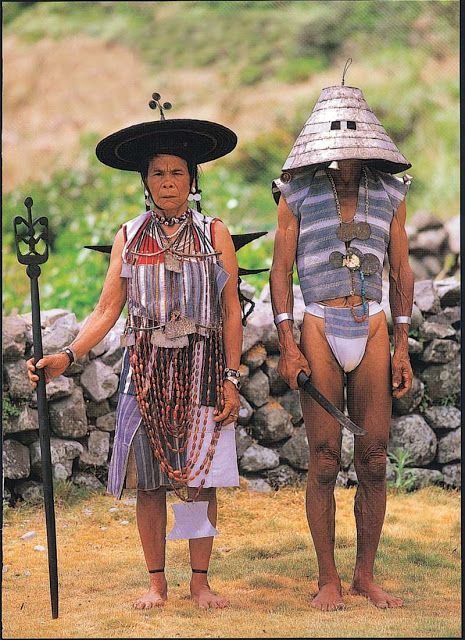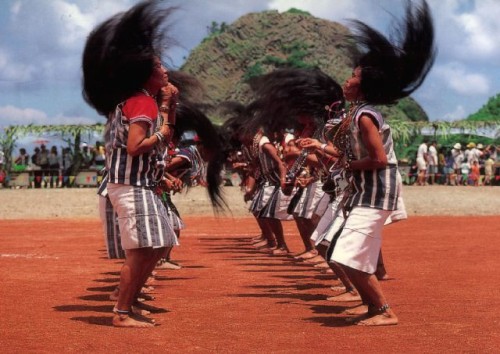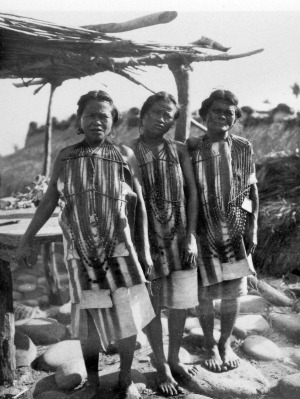The Yami or Tao people of Lanyu (Orchid) Island, TaiwanThese indigenous peoples have been more commo
The Yami or Tao people of Lanyu (Orchid) Island, TaiwanThese indigenous peoples have been more commonly recognized as the Yami people, following a Japanese anthropologist’s coining of the name. However, as a collective, these Orchid Island inhabitants typically prefer “Tao people” as their group identifier. They are part of the Austronesian family, and designated members of the Taiwanese aborigines. Despite being linked to both indigenous Taiwanese and Filipino populations, the Tao people remain unique in their customs and cultural practices.Composed of approximately 3,100 individuals, the island populace relies heavily on fishing for survival. The Tao people’s emphasis on fishing and ocean culture reflects their intense connection to the sea as being about much more than survival; they use fishing and the building of boats as an extension of themselves, and as a way to honor their spiritual beliefs. Their ways of life have been threatened by the continued emigration to the mainland of Taiwan in search of jobs and education. As a result, the continuation of past traditions has been hindered.Citing threats to their cultures and health concerns, the Tao people have been protesting the nuclear waste plant imposed on their island by the government in 1982 and advocating for its removal.Traditional Tao garb consists of simple, uni-colored fabrics made of natural plant fibers. Due to the nature of their fishing tasks, men typically only wear a loincloth and collarless vest. This also helps them to better cope with the stifling heat. Women’s dress typically consists of a cloth or short vest to cover their upper body, and an apron-like cloth to cover parts of their lower body. For special or ceremonial occasions, men and women wear blue and white vests in addition to vibrant accessories, such as an octagonal wooden hat for women, and silver helmets for men. During funerals and times of mourning, women wear their upper garments inside out, and men wear a piece of cloth, reverse side out, on their heads. It is also considered taboo to wear clothing with an odd number of blue or black stripes. Therefore, clothing patterns typically consist of 8 to 12 stripes. Neither in ritualistic or everyday situations do the Tao people wear shoes.The Spanish shipped tons of silver coins from the mines of Mexico to the Philippines. There, the Spanish would purchase items from Chinese merchants using the silver coins. Inevitably, some silver coins ended up on Lanyu. The locals melted and hammered the silver coins into coils and made helmets out of them.With no known enemies, the helmets were not used for protection. Rather, the helmet was a mark of wealth and had animist qualities. The helmet was brought out during ceremonies to show the owner’s wealth. As one accumulated more silver coins, the helmet was enlarged. In addition, the helmet was respected and thought to have supernatural powers. It was used to bless homes, fields, and boats. At the beginning of the fishing season, the helmet would be waved at the coastline to attract fish.The most famous of the Tao dances is the women’s Hair Dance, also known as the Hair-Flinging Dance. For this, the women get in a line, standing side by side and, elbow to elbow, holding each other tightly by the hands, they do not move their feet at first but let their hair fly wildly. As they start to sing, they bend their bodies forward until their long hair touches the ground, and now they begin to move their feet, gradually advancing in a line as they keep flinging their long hair with increasing force and a forward and backward movement of the head. As they dance, they also bend their knees, which adds extra momentum to their moves and allows them to fling their hair even more powerfully to the rhythm of the music. -- source link
#fashion#tao#taiwanese fashion#taiwan









